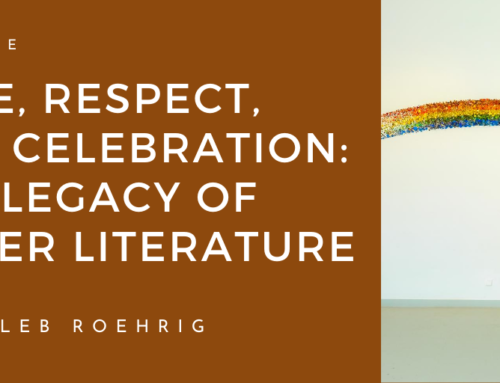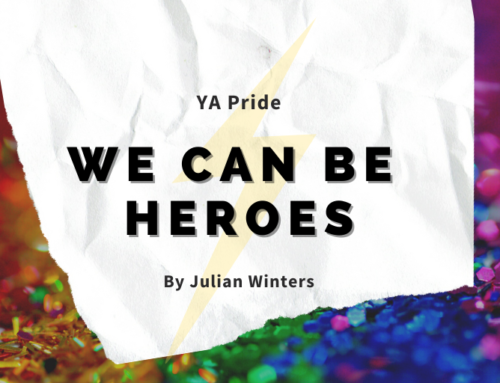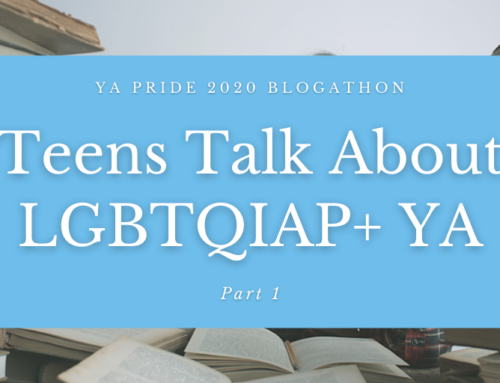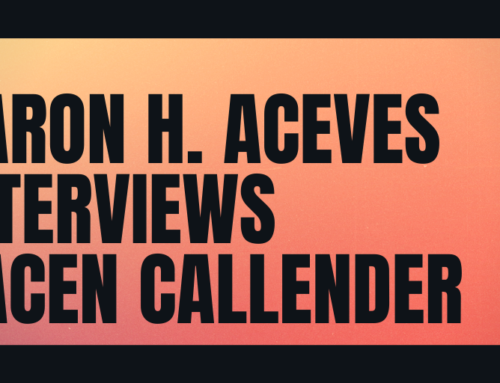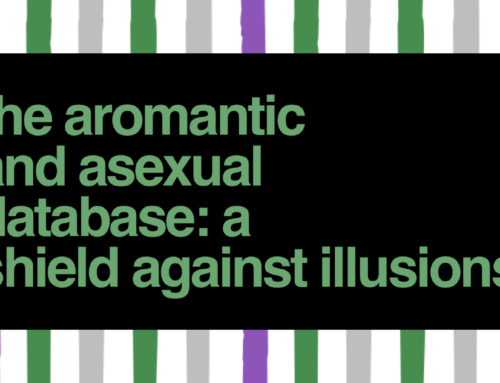by Adriana L.
I try to avoid using the bathroom when I’m on campus. As a student employee and part-time student—someone who can expect to stay on campus for anywhere from four to eight hours on any given day—this is a pretty ambitious feat. Some days, it’s just not feasible. True, there are a few departments with gender neutral bathrooms (which are a blessing), but I can’t always be near them. Because of what I’ve got going on downstairs, when I’m faced with male and female bathrooms, the ladies’ room is my closest choice.
If there’s a wait for the stalls, students towards the back of the line narrow their eyes at me or cross their arms over their chest. If I’m at the back of the line, the next person to come in might stop short in the doorway and do a double take—or, even better, look at the sign on the door to make sure they’ve walked into the right bathroom. When I’m rinsing my hands in the sink, I can see the person at the sink beside me taking in my buzz cut or trying to catch a glimpse beneath my jacket to see if I actually have breasts. Their body language, their reactions, all pose the same question: “Do you even belong here?”
My only option is to offer these people a small smile, some kind of gesture that says, “I don’t want to hurt you. I’m just here to pee.” I am expected to smile at people who make me feel unwelcome; I am expected to present myself as non-threatening when people subtly call into question my very existence.
These small moments, these negotiations expected on my part, are only a small fraction of the hundreds of microaggresions that queer people incur on a day-to-day basis. They are inescapable; they keep us aware nearly every moment of every day that we fall outside of the norm. These reactions, paired with the constant perpetuation of dominant identities, ensure that we stay uncomfortable—that we always remember that we are other.
So how are microaggressions used (or misused) in queer YA, how are they perceived, and to which audiences do those treatments of microaggresions appeal? (Big questions, I know.)
Generally speaking, there are two main camps that a majority of visible (read: buzz-worthy), mainstream queer YA tends to fall into: Queer Tragedy™ and Queer Utopia.
What I call Queer Tragedy™ is akin to the Bury Your Gays trope, except it doesn’t always involve the death of queer characters. These are stories where (often) a queer character’s internal and external conflicts revolve around their identity, which inevitably leads to some kind of tragic climax, whether it be physical assault, rape, a hit-and-run, a suicide attempt, a severe case of bullying, being outed, being thrown out of the house or disowned, being publicly ridiculed or humiliated, etc. These kinds of stories rely on some kind of external force reminding the protagonist why they cannot be themselves.
Let me be perfectly transparent: these stories are absolutely necessary. We all know the statistics; we all know that members of the queer community are at great risk of being raped, beaten, bullied, and—yes—killed. We know there’s still miles to go until we reach a point where all queer people feel safe in public. If these stories come from a place of truth and awareness—for instance, Meredith Russo’s If I Was Your Girl—then they can be incredibly powerful. I am in no way implying that these stories can’t or shouldn’t be written. These narratives shed light on the very real ramifications of openly identifying and/or presenting in a way that doesn’t fit “the norm.” We need these stories to keep ourselves woke, to validate the very real fears and issues that so many experience.
Conversely, the Queer Utopia is formed when a contemporary story is set in the present day, the protagonist is out and proud—probably has been since before the story even began—and no one gives them any problems about it whatsoever. Their parents, friends, family, and peers are 100% supportive, and they live in a wonderful utopic community untouched by bigotry or prejudice.
Let me, once again, be perfectly transparent: these kinds of stories are vital to the community as well. They give queer characters the opportunity to address conflicts outside of their identity—because, guess what, identity is only one sliver of who we are and what we have to deal with. (Novel idea, I know.) Plus, these kinds of narratives provide queer readers with hope; they show us that there’s life outside of the closet and that, yeah, it can be kind of great, especially when you surround yourself with the right kind of people. It can be so exhausting to read book after book just saturated with queer suffering—to be hit over the head again and again with the reminder that you have to work overtime to find any semblance of happiness when it seems to come so easily for everyone else. These stories give us that much needed break, and dare to imagine other possibilities for queer youth. Like I said, vital.
Keep in mind that it’s not my intention to frame this as a false binary (how I hate those), or to imply that there aren’t a ton of incredibly valid queer books out there that fall into neither category and do a great job of addressing the middle ground. (Hint: there definitely are.) I am referring to a very specific subsection of queer YA here: the kind that sells the most, the kind that is reviewed widely and often, the kind that is promoted and recommended the most frequently, the kind of queer lit where every reader—whether they are queer or not—knows that this book “is about queer stuff” the instant they see the cover. Those books. The books that come to define our community whether we intend them to or not. You know the ones.
And a grand majority of the most popular, visible queer YA explores either the Queer Tragedy™ or the Queer Utopia, which is highly problematic in terms of how microaggressions are either used or overlooked. When it comes to the Queer Tragedy™, microaggressions are plot devices used as a precursor to the inevitable, climactic Tragic Moment in the story; they are positioned as conduits for tension, a quick and dirty method to forecast what is to come. On the other hand, contemporary stories that fall in the realm of Queer Utopias are great, but somewhat unrealistic, as they tend to write away the daily struggles that so many still endure. Many queer narratives set in a Queer Utopia fail to acknowledge that while being queer may not necessarily be a major conflict, it’s still a huge part of how others see us and treat us and it still shapes our perspectives and influences how we carry ourselves through the world. To negate the microaggressions we are forced to internalize is to do queer readers a disservice in favor of painting a more palatable picture.
Holistic merit or no, these these books sell. They fly off the shelves. They’re mentioned in every blog post and video titled “LGBTQIA+ Recs” or “My Fave LGBT books.” They are lauded by the reading community, even accepted by the elite reviewers with hundreds and thousands of followers on any given platform, and brought up again and again whenever anyone so much as comments on queer representation in YA. (“Yeah, okay, but don’t you all have
Whether the author intended them to or not, these two popular types of stories—and the subsequent attention they receive—end up reinforcing and further perpetuating an overly-simplistic view of queer lives, one that is “easier” to believe. They reinforce the way many cisgendered, heterosexual readers prefer to see us: either staggering under the weight of piled-on suffering or happy as a clam. Why? Because these extremes seem to “make sense”; they’re the kinds of stories we see plastered on the news every day, what we see shared profusely on social media, the type of stories that kick-start hashtags and social movements. They are the most visible narratives, and they make the microaggressions we face fit into a nice box. Either they will accumulate and lead to Queer Tragedy™ or they simply don’t exist at all, or at least not in a way that can’t be overcome with a simple shift in perspective. Mind over matter and all that.
Again, it is not my intention to imply that queer YA falling into these categories are one-dimensional or one-note. Many stories that revolve around tragedy or explore what HEA looks like can embody all the complexity of the queer experience (or, at the very least, one version of it); these stories can be nuanced and contain multitudes. They are valid.
Whether these books are #ownvoices, whether or not they subvert tropes, whether they come from a place of awareness or truth, whether they portray well, whether the direction of the story is earned or warranted—these are discussions to be had on a book-to-book basis. But when the reading community at large keeps toting out the same books, stories either laden with queer suffering or stories that neglect the very real matter of microaggressions, it makes you wonder. As a queer reader, it makes me wonder every day. Why do so many readers seem to prefer these versions of queer life? Why is it so hard to believe that many queer individuals are forced to internalize the microaggressions they face on top of everything else going on with their lives? We know that queer characters should be afforded as much complexity as cis/het characters, so why are these the narratives dominating our attention, and the attention of non-queer reading communities? And the only answer I can come up with is because it’s easy.
No, these are not the only queer YA books out there, not by any stretch of the imagination, but they are the most celebrated—and that scares me. That scares me more than I can say.
It’s not necessarily a failure of imagination on the part of authors, but on the part of readers and reviewers. What is popular, what is recommended ten thousand times over, is just the tip of the iceberg. We can’t see queer rep as a quota to be met with one best-selling book here and there, but we must keep searching for the queer YA that bridges the gap between these two extremes, that occupies that middle ground of fluctuating emotions that so many experience on a daily basis. We cannot perpetuate the idea that a queer character’s validity boils down to whether their identity is a source of suffering or a source of adversity that can be easily overcome.
Queer Tragedy™ reinforces the idea that queer individuals indeed have something to fear, that they should stay scared; it’s what keeps me looking over my shoulder when I’m walking back to my car alone, it’s what makes me stomach clench when someone gives me a strange look. I’m always waiting for The Big One—the one irreversible consequence of being queer that will come to define me, whatever it might be—because that is what Queer Tragedy™ teaches me to expect. Similarly, I don’t open up about people double-checking the sign on the bathroom when they see me standing inside, or the overwhelming anxiety I experience when I’m invited to attend a formal or professional event and I’m expected to present a certain way, or how hopeless I feel when I see new parents so eager to gender their children because it only reminds me of how needlessly confused I was for so long. I constantly wonder if these are issues that only exist in my head, or if I just made them up, because the widespread acceptance of Queer Utopia teaches me that if nothing inherently bad is happening in my life, then everything should be peachy keen.
Look: both kinds of narratives exist to address a certain need, but they aren’t all that we have. They should not define what the term “queer YA” calls to mind for so many readers.
There is no one universal queer experience; there are no stories about queer characters that aren’t important or that aren’t needed. We need to hit every note imaginable. What I am saying is that it’s easy to default to these two narratives, especially when it comes to queer YA recommendations. What’s easy and what’s real are two very different things. What’s real is much more complex than can be explored in a single blog post. Many of us are subjected to a life of microaggressions, of tiny negotiations that reaffirm our fear that we don’t—or can’t—belong. Happiness and exhaustion are not mutually exclusive concepts, and I keep coming back to microaggressions because they are an undeniable answer as to how that can be true; they’re what often discourage so many people in the community, even on their best days.
While I wouldn’t consider it queer lit, Stephen Chbosky kind of nailed it on the head in his one-hit-wonder, The Perks of Being a Wallflower: “So, this is my life. And I want you to know that I am both happy and sad and I’m still trying to figure out how that could be.” That is a very real truth for so many of us that isn’t celebrated—and isn’t always visible—nearly enough.
That’s why I implore you to read widely and to think critically about the queer YA you consume. Don’t stop at representation and assume that all is well. Don’t gorge yourself on best-selling queer YA and assume your work is done. No, we can’t all read and review every piece of queer lit ever, but we can use the resources we have to find more of those under-celebrated queer YA books that dare add these and different narratives into the mix. We have websites like LGBTQReads, queerya, I’m Here, I’m Queer, What the Hell Do I Read?, thelesbrary, lgbt-ya, queerbookclub, WNDB, and so many more. (Seriously, a perfunctory Google search will do wonders.) While Queer Tragedy™ and Queer Utopia exist for completely valid reasons, there is more to queer YA, and we should celebrate (and strive for) even more nuanced representations for every gradient on all the spectrums. Every experience deserves to be acknowledged, and I invite you to explore as many as possible.
—
 Adriana is a Hispanic, pansexual, nonbinary, aromantic writer who runs a BookTube channel called perpetualpages. In their free time, they vigorously retweet discussions about marginalized voices on a Twitter account of the same name, regularly get lost in the vortex of K-Pop MVs on the internet, and marvel at the number of unfinished manuscripts on their hard drive. Now that they have graduated with a B.A. in Creative Writing, the world is their oyster. Or something like that.
Adriana is a Hispanic, pansexual, nonbinary, aromantic writer who runs a BookTube channel called perpetualpages. In their free time, they vigorously retweet discussions about marginalized voices on a Twitter account of the same name, regularly get lost in the vortex of K-Pop MVs on the internet, and marvel at the number of unfinished manuscripts on their hard drive. Now that they have graduated with a B.A. in Creative Writing, the world is their oyster. Or something like that.